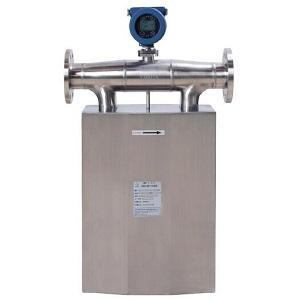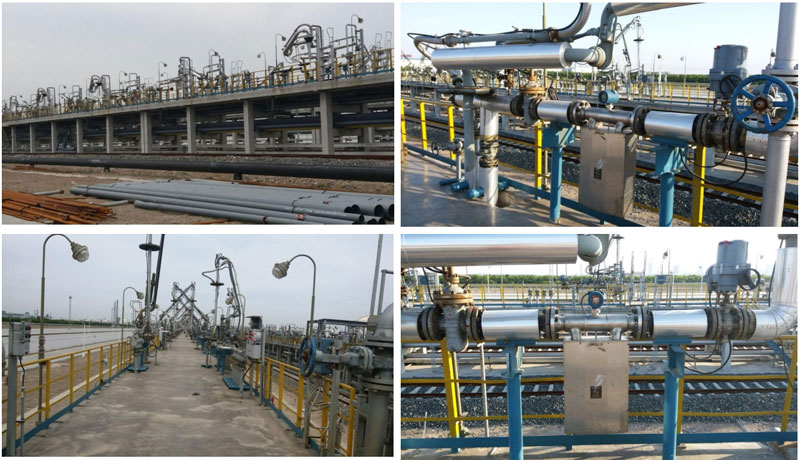
A flow meter based on Coriolis effect employs unique science exploiting rotational principles to detect flow metrics. As fluids progress through curled segments, rotational forces cause measurable deflections in flow direction, indicative of mass flux, permitting accurate flow analysis. Valued for wide-ranging applicability, equipped for different flow categories with minimal hydraulic impact.
- Gains of Coriolis Flow Meters:
- Remarkable precision levels:
- Broad operational capacity:
- Simultaneous density & viscosity assessment:
Examining Coriolis Meter Basics
Innovative Coriolis meters act as effective gauges employed to determine accurately of liquids in conduits. Applying inertial deflection principles, they assess flow through force-induced distortions. Inside oscillatory conduits, streamline bends sideways, dependent on flow orientation. Detectors register displacement, changing physical shifts into signals aligned with transport magnitude.
- Functions of Coriolis flowmeters include:
- Manufacturing oversight in chemical sectors
- Agricultural supply
- Wastewater treatment
Choosing Optimal Coriolis Flow Meters
Coriolis meters excel in providing detailed data for fluid flow analysis. Yet, with varieties of available models, picking the best fit for applications may be intricate. Key considerations when obtaining your Coriolis flow meter include: * **Characteristics of the fluid:** The fluid tracked impacts makeup and performance. * **Flow capacity range:** Meters perform within distinct flow limits. Guarantee your needs are met. * **Accuracy standards:** Different use cases demand diverse precision levels. Outline these to narrow down models. * **Operational environment:** Factors such as temperature, pressure, and fluid viscosity determine meter outcomes. * **System compatibility:** Assess integration and joining with existing infrastructure.Advantages of State-of-the-Art Coriolis Flow Systems
Leading-edge measurement systems provide a wide variety of strengths for industrial needs. Primarily, these meters offer exceptional precision, facilitating precise mass flow supervision. Supplementarily, Coriolis meters provide simultaneous mass plus density data in one device, creating medidor de coriolis them remarkably suited for high-stakes measurement. Furthermore, their robustness enables operation in harsh settings.
- As a result, these devices see pervasive use in fields like oil and gas, chemicals, food and beverage sectors, and pharmaceuticals.
Innovative Calibration Methodologies
Industrial environments requiring accuracy prioritize Coriolis flowmeter performance. Ensuring dependable, repeatable results demands advanced calibration methods. These exceed basic protocols by integrating specialized instrumentation and detailed analysis.
Employment of standardized calibrators ensures integrity. By comparing meter outputs with known benchmarks, technicians detect discrepancies and apply corrections.
- Multi-point calibration, assessing various flow rates, yields comprehensive performance profiling across meter ranges.
- Advanced software assists data management and visualization, enabling system evaluation.
Consistent use of advanced calibration ensures optimal meter accuracy, driving productivity boosts across industries.
Troubleshooting Frequent Meter Issues
Coriolis meters provide trusted accuracy and adaptability yet face occasional deficiencies. Early issue identification is vital to reducing downtime and maintaining system reliability. Typical complications involve inaccurate data, often caused by improper setup, dirty sensing components, or flow disturbances. Electronic interference may result from changing fluid properties, mechanical vibrations, or electromagnetic disturbances. Effective problem-solving requires thorough examination of conditions, sensor outputs, and operational logs.
- Regular inspection for damage or contamination applies.
- Meter adjustment maintains accuracy.
- Watching measurements aids early detection.
- Proper installation helps reduce interference.
Carrying out protocols counters common Coriolis flowmeter challenges, ensuring reliable fluid monitoring and operational consistency.
Advanced Coriolis Meter Use in Process Automation
Technology offers accurate fluid rate calculation within industrial applications. Utilizing the Coriolis effect triggered by fluid passage inside vibrating tubes, alterations in tube motions correspond to fluid liquid quantity. This quality enables state-of-the-art quantification of process streams even in variable environments.
These instruments cater to a multifaceted range of uses, including chemical processing. Their durability makes them optimal for demanding environments, and their smart output enables fluid network integration with control software.
Reliable Fluid Quantification using Coriolis Systems
Coriolis sensors deliver excellent results across multiple applications. They employ rotational physics to quantify mass flow, yielding highly reliable data under variable flow regimes. Unlike alternative flow technologies, Coriolis sensors provide persistent readings, facilitating exact supervision. Their dual ability to measure mass flow and density makes them ideal for complex flow assessments. Furthermore, Coriolis sensors exhibit endurance, thriving in difficult operating environments. This combination of performance qualifies Coriolis sensors as a foremost choice for demanding flow measurement situations.Coriolis Meter Deployment in Oil & Gas
Coriolis flowmeters have exemplified themselves as trustworthy tools in the oil and gas field. Their capacity to simultaneously measure fluid quantity and medium concentration renders them multi-functional for many operational tasks. In refining workflows, Coriolis meters facilitate monitoring hydrocarbon streams in loading terminals. They also fulfill pivotal roles in process supervision and guarantee reliable metering for sales measurement.Coriolis Flowmeter Applications for Water Systems
Coriolis-based meters equip water systems with precise measurement for precise assessment in water management contexts. Utilizing inertia principles, they observe mass displacement through bent tubes. This sensitive data promotes real-time liquid volume tracking, indispensable for enhancing system performance.
- Uses of Coriolis flowmeters in water systems encompass broad utilities, such as: distributing water to homes and industries, tracking water usage for irrigation and power generation, and controlling water flow in water preparation plants.
- Pros for Coriolis flowmeters in this area present: superior reliability, broad scope across quantities, and low upkeep requirements.
Improving Fluid Flow Metrics Through Coriolis Devices
Coriolis flowmeters have established themselves as respected solutions for monitoring gases. These techniques apply the Coriolis effect to quantify both mass flow and fluid density. Implementing Coriolis technology can maximise measurement accuracy, decrease operating expenses, and supply insightful data about process metrics. Their versatility enables use in a comprehensive range of applications such as processing.
